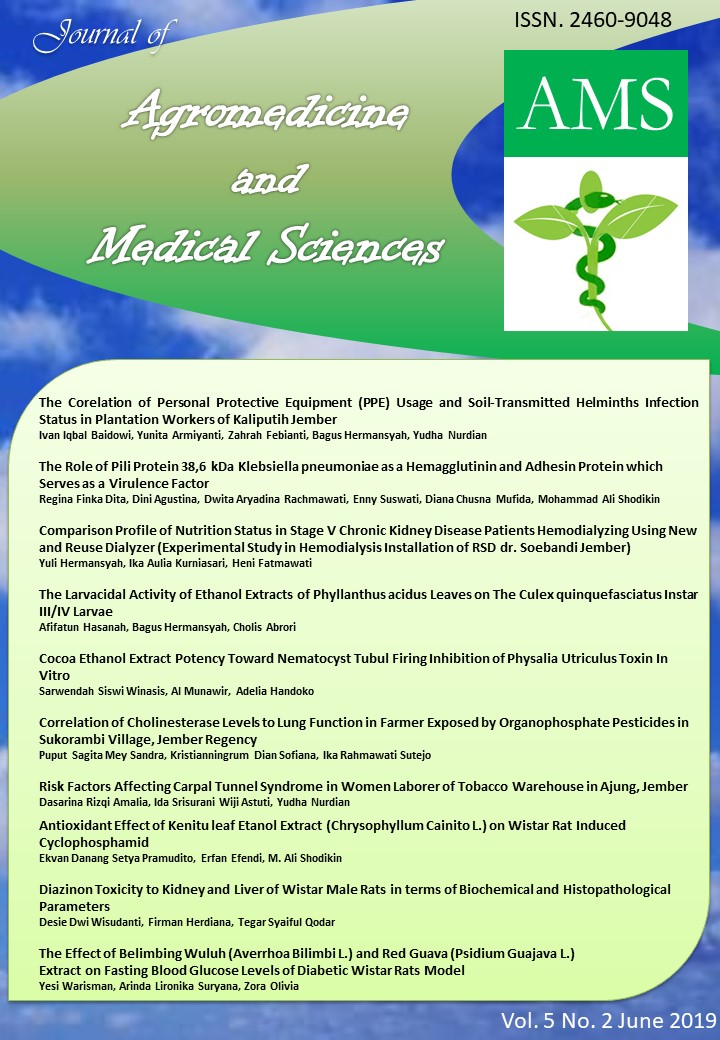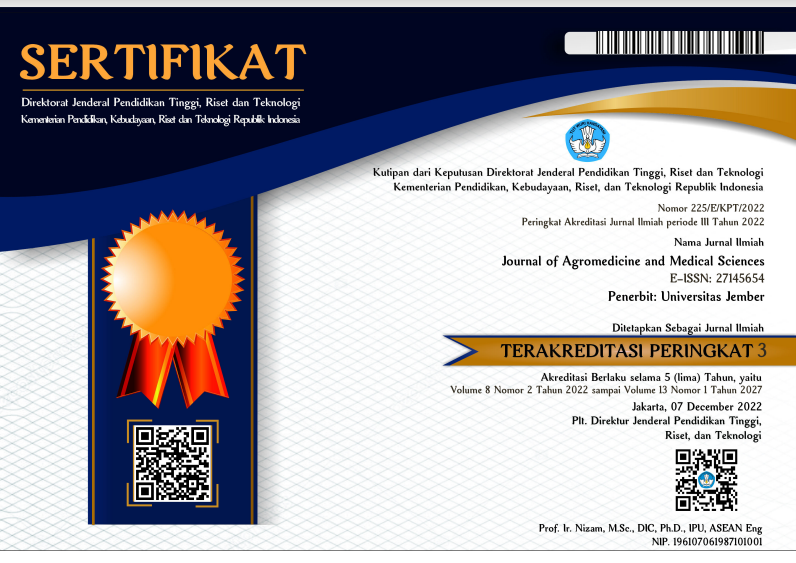The Correlation Between The Use of Personal Protective Equipment (PPE) and Soil-Transmitted Helminths Infection in the Workers of Kaliputih Plantation Jember Regency
DOI:
https://doi.org/10.19184/ams.v5i2.9625Abstract
This study aimed to investigate the correlation between the use of Personal Protective Equipment (PPE) and the status of Soil-Transmitted Helminths infection in the workers of Kaliputih plantation in Jember Regency. The research method applied was Analytic observational with a Cross-sectional approach. The population, as well as the sample, were all workers of Kaliputih Plantation, Sumber Bulus Village, Ledokombo District, Jember Regency, by the total of 63 people. The sampling technique was the Total sampling. Laboratory analysis on faecal samples of respondents were conducted at the Parasitology Laboratory, Faculty of Medicine, University of Jember. Furthermore, the research data were analyzed using Chi-Square analysis or Fisher’s Exact Test. The results demonstrated that the prevalence of STH infection in Kaliputih Plantation workers was 25%. This figure was supported by the good awareness of the use of Personal Protective Equipment (PPE) of workers (91.67%). In addition, the Soil-Transmitted Helminths species that infested the plantation workers were Ascaris lumbricoides, found in 6 people (16.67%), and Hookworm, found in 3 people (8.33%). Finally, the result of Chi-square analysis showed a significance value of <0.05. Therefore, it can be concluded that the use of PPE in Kaliputih plantation workers had a significant correlation with the STH infection status.
Keywords: Correlation, PPE, Soil-Transmitted Helminths Infection























